I don't build too many project bikes, because for me there is really little need. Stock stuff is so good that it's hard to make a bike better for all-around usage, in my opinion. But when you get specific with your riding, then you can build the bike for the job. The Red Bull Last Man Standing was going to be a hardcore trail ride, and I know how to build the ultimate hardcore trail riding bike.Light, and keep it that way as much as possible, was rule number one. So anything I added was specific and pointed at protection—forget the bling. E-line was call number one for the carbon/kevlar protective skid plate, pipe guard and chain guide. Scott's Performance was next for the billet Shark Fin to keep the rear disk rotor straight. I prefer plastic handguards as they let the bars flex and don't transmit too much impact when hitting things, so I chose the Acrebis Rally IIs. Some really important straps, called Tuggers were installed on the front fork and over the rear fender to give helpers something to grab when I was in need of a tow. And the most obvious (now the secret is out of the bag) was the Dunlop D801 trials tire run at 12 psi with heavy-duty tubes. I went for a 739 front for all around performance.As for the engine, it was basically stock with some fine tuning in the power delivery on a couple of levels. First I switched to the 2KG ignition and flywheel out of a KTM 300 EXC. It has a bigger, heavier flywheel and it allows the stator to be wound for nearly 130 watts of light output; Baja Designs came into the picture and did the rewind. Also to add more rotating mass and get a more durable and consistent feeling clutch (especially under a lot of abuse), I took out all of the aluminum clutch plates and installed steel ones. They work better when they get hot, don't expand as much and resist warping when really abused. My pipe of choice was the FMF Gnarly with the Q2 silencer to smooth the power even further, plus the pipe is built from heavier gage steel than the stock one.I believe I had the best light setup at the event, using the new Baja Designs Dual stacked HID—the one the Dirt Rider team ran at the 24-hours of Glen Helen. The really trick part of my setup was the addition of the four-stroke RFS battery, whose cage bolts right into the 200's air box. All of the power from the ignition was then run through a regulator/rectifier into the battery, which then directly powers the lights. The cool thing was that in about a couple of minutes the battery can be installed or removed.How did it work? Well, simply finishing the race speaks volumes for the bike. And I know from riding a lot of other bikes, this was one of the easiest to get through some pretty gnarly stuff on. It tumbled well, always started on the first kick and took a lot of heat before boiling radiator fluid. It went the full 40 miles on a single tank and it had plenty of power. In fact, I was first to the end of the bomb run both times. Isn't the first bike to the first turn the fastest one in the race?
||| |---|---| Contact list:|Baja Designs|[www.bajadesigns.com| |E Line |www.elineaccesories.com| |Scott's Performance|www.scottsperformance.com| |FMF|www.fmfracing.com| |Acrebis|www.acrebis.com| |Highline Recreation|www.highline-recreation.com|
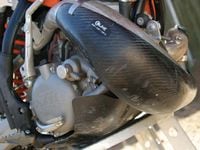
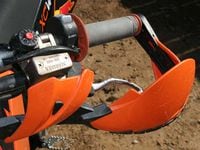
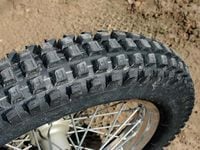
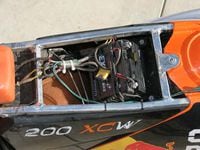
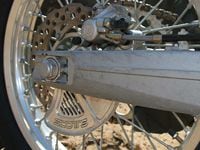
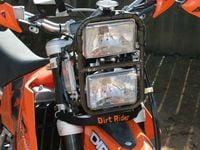
/cloudfront-us-east-1.images.arcpublishing.com/octane/QIHVKX7K6RBAFMHZCZYLJ3RDHU.jpg)
/cloudfront-us-east-1.images.arcpublishing.com/octane/OZ6NGNKQRNCQ7HO4EHIX5S32RQ.jpg)
/cloudfront-us-east-1.images.arcpublishing.com/octane/NJWC3JHMCZBCTGMC7XSQ4HXDDY.jpg)
/cloudfront-us-east-1.images.arcpublishing.com/octane/W2WMWDRFVJD6HP4XCRFISKUVLI.jpg)
/cloudfront-us-east-1.images.arcpublishing.com/octane/FUUS4XCVVZHYLBVJDLUGRT7RZQ.jpg)
/cloudfront-us-east-1.images.arcpublishing.com/octane/FSUTQ6NZ7RCO3M4NCBRJPKNM5M.jpg)
/cloudfront-us-east-1.images.arcpublishing.com/octane/XAZ2DGYTEJA2BE2TQ6H3KWXW4U.jpg)
/cloudfront-us-east-1.images.arcpublishing.com/octane/WC2HVBKSHNEJBODES2R5Y53VRY.jpg)
/cloudfront-us-east-1.images.arcpublishing.com/octane/JRSZS66MQBDH7O2JNMJHBQKIA4.jpg)
/cloudfront-us-east-1.images.arcpublishing.com/octane/WM3CKNM255E7NLISG3J5SOU63Y.jpg)
/cloudfront-us-east-1.images.arcpublishing.com/octane/XP5WDDR2AVGR3BF5S6TPCGYJ5A.jpg)
/cloudfront-us-east-1.images.arcpublishing.com/octane/7UAIG5GYLZH7LD72MKUYIHQYWU.jpg)
/cloudfront-us-east-1.images.arcpublishing.com/octane/6KXNSCIBK5BUNIJXUUELRO5W5Q.jpg)
/cloudfront-us-east-1.images.arcpublishing.com/octane/ZEQ7DSS7ZJCSLDAPECTSOAOGXI.jpg)
/cloudfront-us-east-1.images.arcpublishing.com/octane/OFSXJJ5PZFEZ5D5ZPMCFVHJUMA.jpg)
/cloudfront-us-east-1.images.arcpublishing.com/octane/N2JLNLG44VEKBMEPORRDTMX5A4.jpg)
/cloudfront-us-east-1.images.arcpublishing.com/octane/EOERU244ONEWVKQ7C24OHMRVWY.jpg)
/cloudfront-us-east-1.images.arcpublishing.com/octane/JF4T3ULTGNHTVEKSTNKLJ2IGKY.jpg)
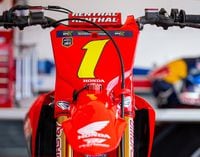
/cloudfront-us-east-1.images.arcpublishing.com/octane/FAOZEEEXFVA3ZK2PYMY3DHI2EQ.jpg)
/cloudfront-us-east-1.images.arcpublishing.com/octane/WCAUGYKA5FDZTB64FM36LJFMMM.jpg)
/cloudfront-us-east-1.images.arcpublishing.com/octane/EIDVOIN5IJDMRIVS2VNTOOBVSA.jpg)
/cloudfront-us-east-1.images.arcpublishing.com/octane/5BSWCTPONFB3DJFRPJ34STZMR4.jpg)
/cloudfront-us-east-1.images.arcpublishing.com/octane/KSERUHQUTNHLBCWKXS2R3TYZHI.jpg)